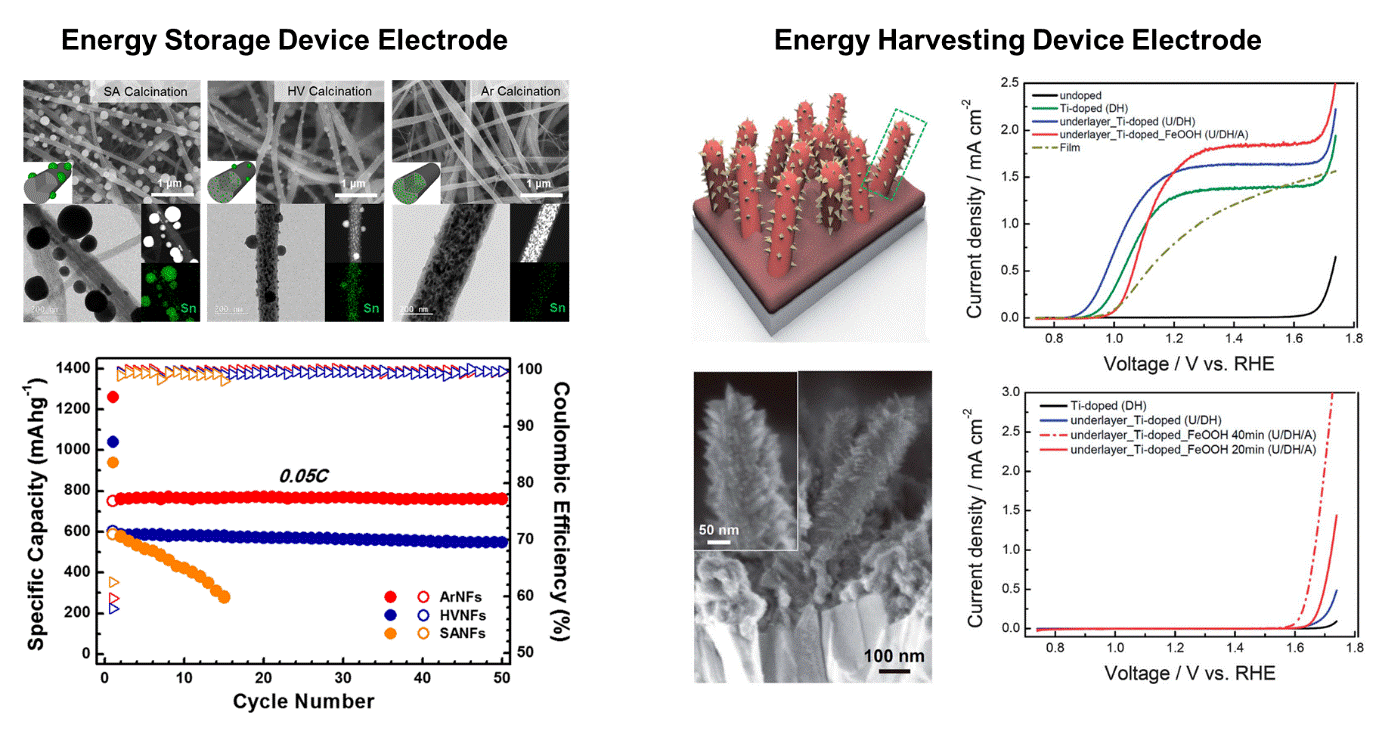Over the past several centuries, population growth has increased dramatically due to the advances in medical technology and food production. As a result, the energy demand for mankind increased and the environment was rapidly deteriorated as we produce the energy by non-environmentally friendly energy sources like fossil fuel and nuclear power. So, for sustainable development of future society, materials that improve the environment and utilizes clean energy sources are needed to be developed. Future material will inevitably be composed of a complex multi-element system, and our research group aims to solve the fundamental problems of environment and energy. Based on the free energy thermodynamic calculations in the complex multi-element system, the prediction synthesis system for the multi-dimensional structure and phase is constructed. Through the established process technology, we have customized materials for various applications.
We developed 2-D layered MoS2/carbon hybrid material that can electrochemically generate the H2 from the water effectively, which can be used as clean fuel in the fuel cell, hydrogen vehicle, etc. The layered growth and lateral growth of MoS2 in carbon nanofiber is controlled by the combustion kinetics of carbon matrix. We predicted the process parameters to precisely control the MoS2 layers in Mo-S-O-C 4-component system from phase diagram and Ellingham diagram based on thermodynamic calculation.
Also, we developed highly reliable Li-ion battery anode using Sn as active material and carbon as supporting material. Though Sn has high theoretical capacity, the application of Sn to the battery electrode has been limited by its volume change of more than 200% during charging/discharging. By controlling the calcination condition, Sn nanoparticles are uniformly dispersed in carbon nanofiber which suppress the volume change during charging/discharging.
